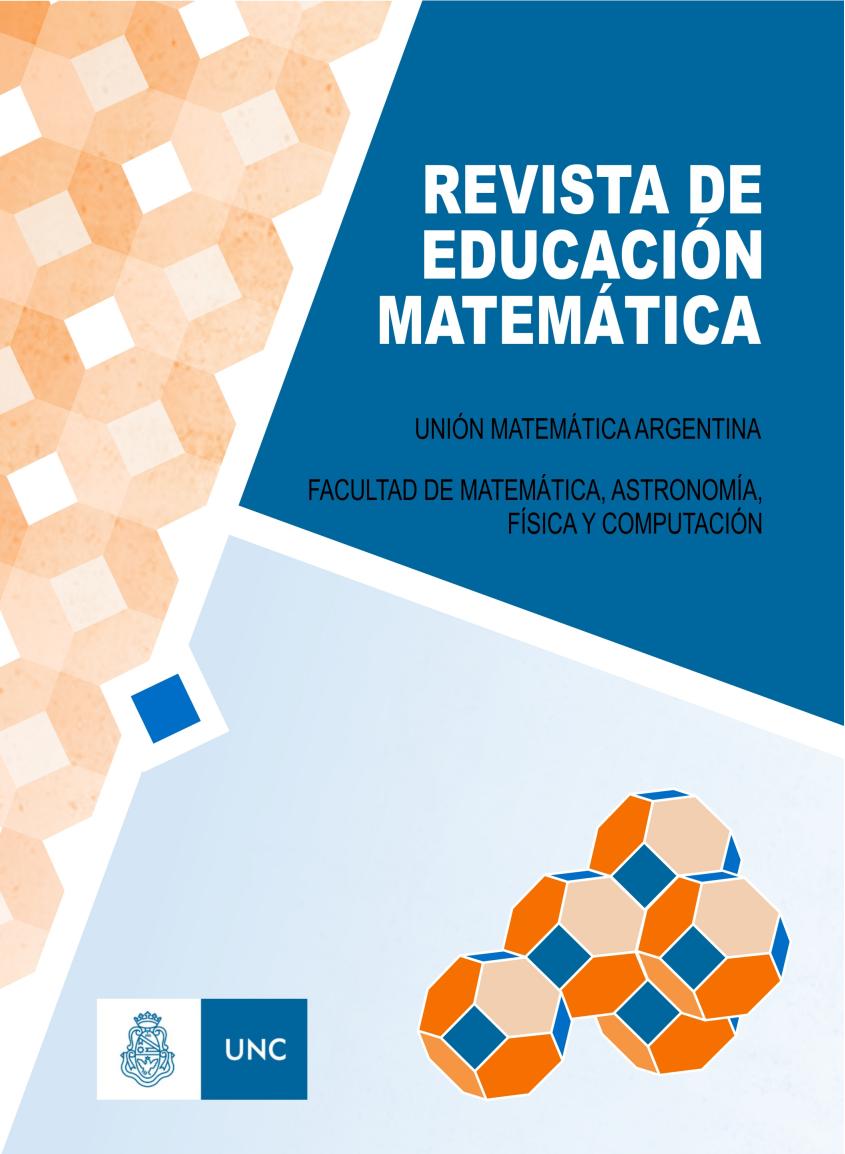The dynamic demostrations of the Pythagorean theorem
DOI:
https://doi.org/10.33044/revem.32658Keywords:
Theorem of Pythagoras, Dynamic geometry software, Teaching geometry, Geometrical demostrationsAbstract
We present a study on algebraic and geometric proofs of the Pythagorean Theorem, for Secondary Education, using free software of dynamic geometry. The categorization of the demonstrations offers the teacher a useful sample as a tool for the selection of the didactic resources necessary for the teaching and learning of this theorem. The set of dynamic constructions represented with GeoGebra, as a result of an updated revision and a subsequent selection, could favour the teacher’s teaching task.
Downloads
References
Alibert, D., y Thomas, M. (1991). Advanced mathematical thinking. Dordrecht, Países Bajos: Kluwer Academic Publishers.
Alsina, C. (1997). ¿Por qué geometría? Propuestas didácticas para la ESO. Madrid: Síntesis.
Alsina, C. (2008). Geometría y realidad. Sigma: Revista de matemáticas.(33), 165-179.
Alsina, C., Fortuny, J., y Burgués, C. (1988). Materiales para construir la geometría. Madrid, España: Síntesis.
Barrantes, M. (1990). Pitágoras en el país de los puzles. Campo Abierto. Revista de Educación, 7(1), 221-230.
Barrantes, M. (1998). La geometría y la formación del profesorado en primaria y secundaria. Badajoz, España: Manuales UEX.
Barrantes, M., y Balletbo, I. (2012). La enseñanza y aprendizaje de la geometría en revistas científicas españolas de mayor impacto de la última década. San Juan Bautista, Paraguay: Litocolor.
Barrantes, M., y Barrantes, M. (2017). Geometría en la Educación Primaria. Badajoz, España: Indugraphic Digital.
Barrantes, M., y Blanco, L. (2006). A study of prospective Primary teacher’s conceptions of teaching a learning geometry. Journal of Mathematics Teacher Education, 5(9), 411-436.
Bell, A. (1976). A study of pupil’s proof-explanation in mathematical situation. Educational Studies in Mathematics, 1(7), 23-40.
Bergua, J. (1958). Pitágoras. Madrid, España: Ibéricas.
Bhaskara. (2015). Lilivati. Matemáticas en verso del siglo XII. Madrid, España: Real Sociedad Matemática Española S.M.
Cabrera, C., y Campistrous, L. (2007). Geometría dinámica en la escuela, ¿Mito o realidad? Uno: Revista de Didáctica de las Matemáticas, 13(45), 61-79.
Caniff, P. (1997). Pitágoras. Madrid, España: M.E. Editores.
De Villiers, M. (1993). El papel y la función de la demostración en matemática. Epsilon, 26, 15-29.
Duval, R. (1998). Perspectives on the Teaching of Geometry for the 21st Century.
Dordrecht, Países Bajos: Kluwer Academic Publishers.
Fiallo, J. (2010). Estudio del proceso de demostración en el aprendizaje de las razones trigonométricas en un ambiente de geometría dinámica (Tesis Doctoral no publicada). Universitat de València.
González, P. (2001). Pitágoras. El filósofo del número. Madrid: Nivola.
González, P. (2004). La historia de las matemáticas como recurso didáctico e instrumento para enriquecer culturalmente su enseñanza. Suma, 45, 17-28.
González, P. (2008). El teorema de Pitágoras: Una historia geométrica de 4000 años . Sigma, 32, 103-130.
Groman, M. (1996). Integrating Geometer’s Sketchpad into geometry couser for secondary education mathematics major.
Gutiérrez, A., y Jaime, A. (2012). Reflexiones sobre la enseñanza de la geometría en primaria y secundaria. Tecné, Episteme y Didaxis: TED., 32, 55-70.
Hoyles, C. (1997). The curricular shaping of students’ approaches. For the learning of Mathematics, 1(17), 7-16.
Jones, K. (2000). Providing oa foundation for deductive reasoning: students’ interpretation when using dynamic geometry software and their evolving mathematical explanations. Educational Studies in Mathematics, 44, 55-85.
Lampert, M. (1990). When the problem is not the question and the solution is not the answer: mathematical knowing and teaching. American Educational Research Journal, 27(1), 29-63.
Loomis, E. (1968). The Pythagorean Proposition. Washington, D.C.: National Council of Teachers of Mathematics.
Mariotti, M. (2000). Proofs produced by secondary school students learning geo metry in a dynamic computer environmet. Educational Studies in Mathematics, 44, 87-125.
Marrades, R., y Gutiérrez, A. (2000). Proofs produced by secondary school students learning geometry in a dunamic computer environmmet. Educational Studies in Matematics(44), 87-125.
Nelsen, R. (1993). Proof without word: Exercises in visual thinking. Washington, D.C., EEUU: The Mathematical Association of America.
Sada, M. (2010). Algunas de las posibilidades didácticas de GeoGebra en las aulas. II Jornadas de Integración de las TIC en la Enseñanza.
Schuré, E. (1995). Los grandes iniciados. Vol. II. Buenos Aires, Argentina: REI.
Strathern, P. (1999). Pitágoras y su teorema. Madrid, España: Siglo XXI de España Editores.
Thomas, I. (1985). Matemáticos griegos. Enciclopedia Sigma I. Barcelona, España: Grijalbo.
Vasquez, M. (2012). Una ampliación al teorema de Pitágoras. Revista de Educación Matemática, 27(3), 3-22.
Downloads
Published
Issue
Section
License

This work is licensed under a Creative Commons Attribution-ShareAlike 4.0 International License.
Aquellos autores/as que tengan publicaciones con esta revista, aceptan los términos siguientes:
- Los autores/as conservarán sus derechos de autor y garantizarán a la revista el derecho de primera publicación de su obra, el cuál estará simultáneamente sujeto a la Atribución-CompartirIgual 4.0 Internacional (CC BY-SA 4.0), que permite:
- Compartir — copiar y redistribuir el material en cualquier medio o formato
- Adaptar — remezclar, transformar y construir a partir del material
- La licenciante no puede revocar estas libertades en tanto usted siga los términos de la licencia
- Los autores/as podrán adoptar otros acuerdos de licencia no exclusiva de distribución de la versión de la obra publicada (p. ej.: depositarla en un archivo telemático institucional o publicarla en un volumen monográfico) siempre que se indique la publicación inicial en esta revista.
- Se permite y recomienda a los autores/as difundir su obra a través de Internet (p. ej.: en archivos telemáticos institucionales o en su página web) después del proceso de publicación, lo cual puede producir intercambios interesantes y aumentar las citas de la obra publicada. (Véase El efecto del acceso abierto).









